John Duncan Fergusson RBA (British, 1874-1961)Yachts, 1927
signed and dated 'J.D.FERGUSSON/1927' (verso)
oil on canvas
56 x 61.5cm (22 1/16 x 24 3/16in).FootnotesProvenance
With Alexander Reid & Lefevre, Ltd., London.
Anon. sale, Sotheby's, Edinburgh, 23 March 1993, lot 278.
Of the Scottish Colourists, Fergusson had the most intense and enduring connection with France. From Paris, Fergusson journeyed to the South of France in 1913, where the colour and subject matter he found there informed his painting and sculpture for the rest of his career. Fergusson's work grew bolder, livelier and encapsulated the exuberant enjoyment of life that was found there.
Fergusson settled on the Cap d'Antibes, then a quiet backwater, deserted in summer. He had met the dancer Margaret Morris in Paris. In one of his first letters to her he wrote:
'...the place here has given me a new start, a different feeling altogether about painting, or rather it has given me what I've been trying to make out of nothing – the colour, the shapes, everything that I was developing by sheer sweat and labour is here. The light that one snatched with excitement when it happened once in a blue moon, is here even in winter.'
(Margaret Morris, The Art of J.D. Fergusson: A Biased Biography, Glasgow, 1974, 2010 edition, p. 76)
The outbreak of the Great War in 1914 forced Fergusson to return to Britain. As soon as the war was over, in 1918, Fergusson resumed his visits to the South of France which continued to provide the main subject matter for his paintings.
This reintroduction to the South of France inspired Fergusson's work and he embarked on a series of female nudes and dazzling coastal landscapes, both major themes which encapsulated the joie de vivre of the period. By 1927, Fergusson was arguably at the peak of his career, producing some of his finest work that would go on to support no fewer than four solo exhibitions in 1928 - Chicago at the Chester Johnson Gallery, London at Reid & Lefevre, Glasgow at Reid & Lefevre and New York at C.W. Kraushaar Galleries.
Moving away from his earlier, more overtly Impressionist-inspired landscapes, Fergusson explored a bolder, new style where line and form played a more dominant role alongside colour. He approached the landscape by using a precision of pattern and design, focusing on geometric values and strong spatial divisions. Although his carefully constructed composition and energetically applied paint (using small, repetitive and vibrant brushstrokes to build complex fields of colour) have obvious hints of Van Gogh's or Cézanne's style, the hand of Fergusson remains pure and authentic.
The present work is an outstanding example of Fergusson's ability to create movement at the same time as serenity, through a masterful use of shape and colour. It demonstrates a unique combination of the latest artistic techniques emanating from France at the time, combined with Fergusson's Scottish heritage, resulting in a bold and exciting modernism, up until that point had not been seen in Britain.
John Duncan Fergusson RBA (British, 1874-1961)Yachts, 1927
signed and dated 'J.D.FERGUSSON/1927' (verso)
oil on canvas
56 x 61.5cm (22 1/16 x 24 3/16in).FootnotesProvenance
With Alexander Reid & Lefevre, Ltd., London.
Anon. sale, Sotheby's, Edinburgh, 23 March 1993, lot 278.
Of the Scottish Colourists, Fergusson had the most intense and enduring connection with France. From Paris, Fergusson journeyed to the South of France in 1913, where the colour and subject matter he found there informed his painting and sculpture for the rest of his career. Fergusson's work grew bolder, livelier and encapsulated the exuberant enjoyment of life that was found there.
Fergusson settled on the Cap d'Antibes, then a quiet backwater, deserted in summer. He had met the dancer Margaret Morris in Paris. In one of his first letters to her he wrote:
'...the place here has given me a new start, a different feeling altogether about painting, or rather it has given me what I've been trying to make out of nothing – the colour, the shapes, everything that I was developing by sheer sweat and labour is here. The light that one snatched with excitement when it happened once in a blue moon, is here even in winter.'
(Margaret Morris, The Art of J.D. Fergusson: A Biased Biography, Glasgow, 1974, 2010 edition, p. 76)
The outbreak of the Great War in 1914 forced Fergusson to return to Britain. As soon as the war was over, in 1918, Fergusson resumed his visits to the South of France which continued to provide the main subject matter for his paintings.
This reintroduction to the South of France inspired Fergusson's work and he embarked on a series of female nudes and dazzling coastal landscapes, both major themes which encapsulated the joie de vivre of the period. By 1927, Fergusson was arguably at the peak of his career, producing some of his finest work that would go on to support no fewer than four solo exhibitions in 1928 - Chicago at the Chester Johnson Gallery, London at Reid & Lefevre, Glasgow at Reid & Lefevre and New York at C.W. Kraushaar Galleries.
Moving away from his earlier, more overtly Impressionist-inspired landscapes, Fergusson explored a bolder, new style where line and form played a more dominant role alongside colour. He approached the landscape by using a precision of pattern and design, focusing on geometric values and strong spatial divisions. Although his carefully constructed composition and energetically applied paint (using small, repetitive and vibrant brushstrokes to build complex fields of colour) have obvious hints of Van Gogh's or Cézanne's style, the hand of Fergusson remains pure and authentic.
The present work is an outstanding example of Fergusson's ability to create movement at the same time as serenity, through a masterful use of shape and colour. It demonstrates a unique combination of the latest artistic techniques emanating from France at the time, combined with Fergusson's Scottish heritage, resulting in a bold and exciting modernism, up until that point had not been seen in Britain.
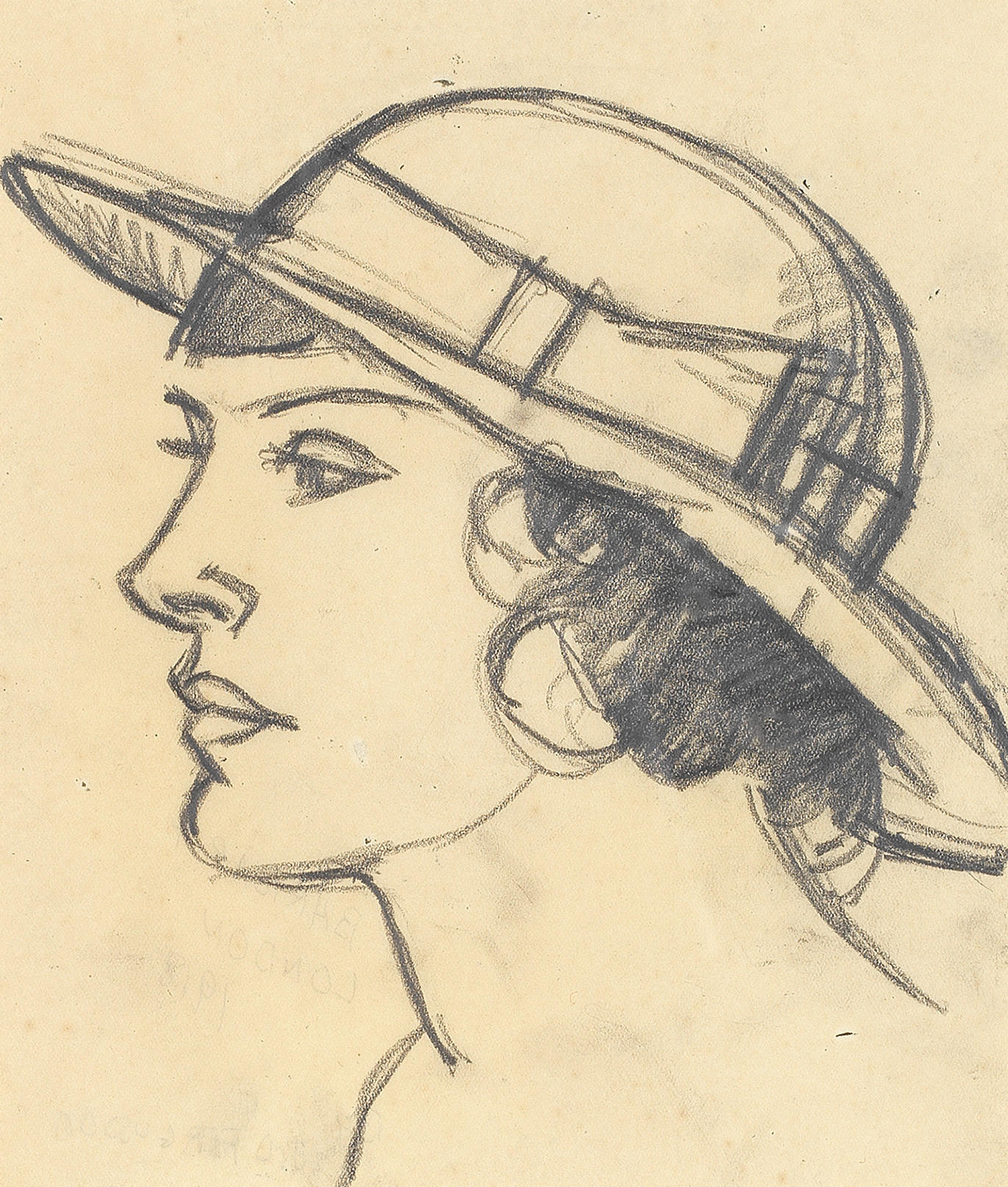
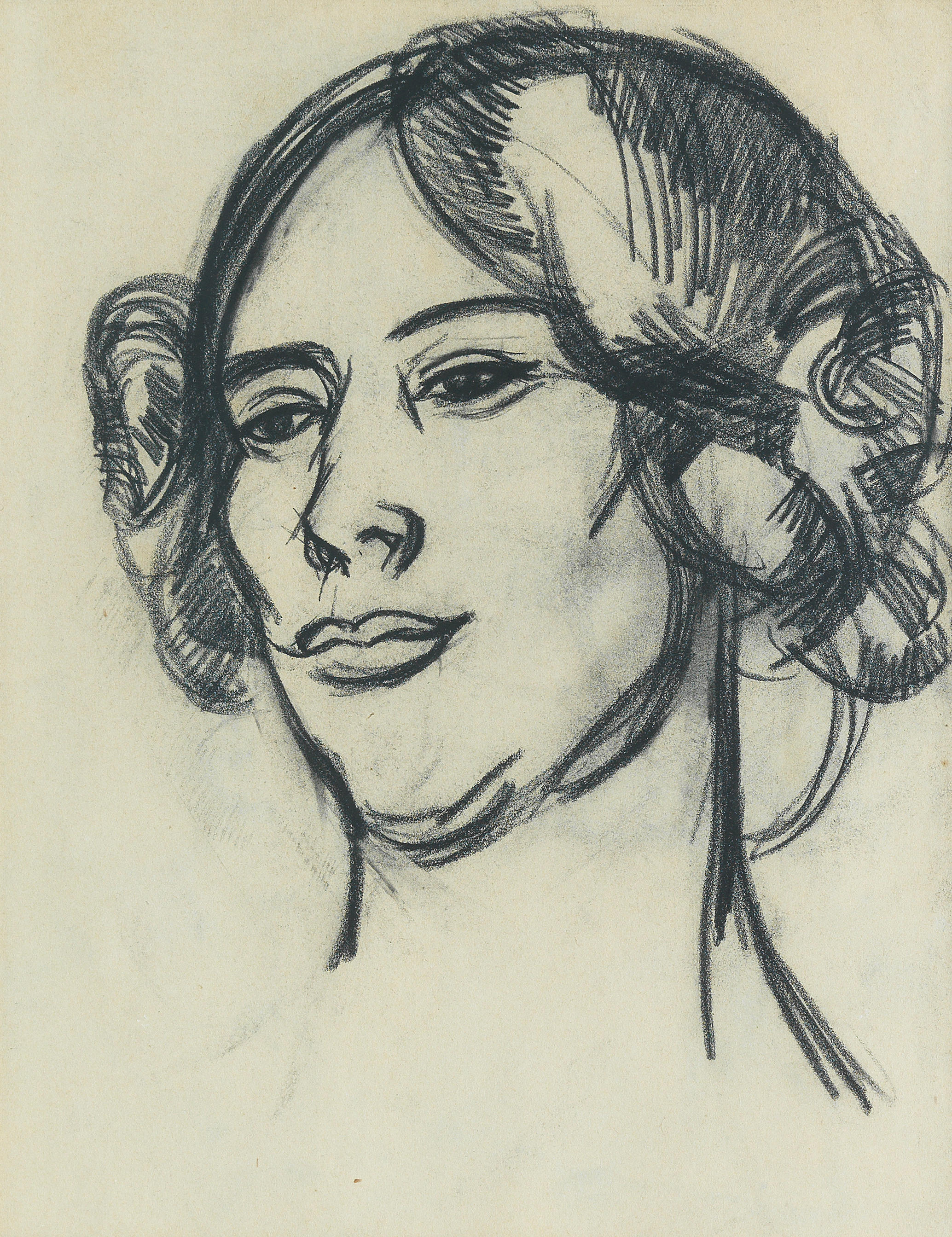
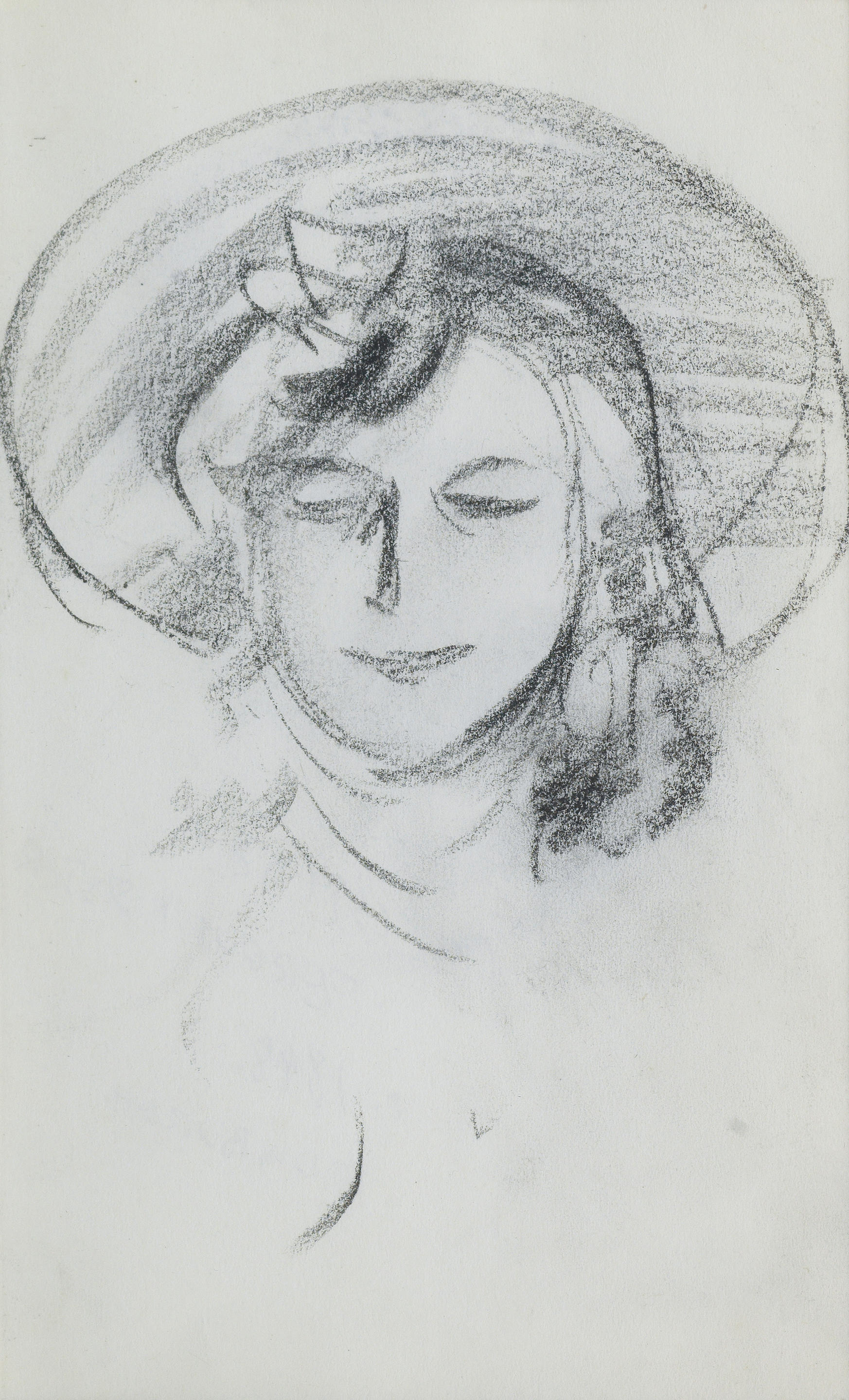
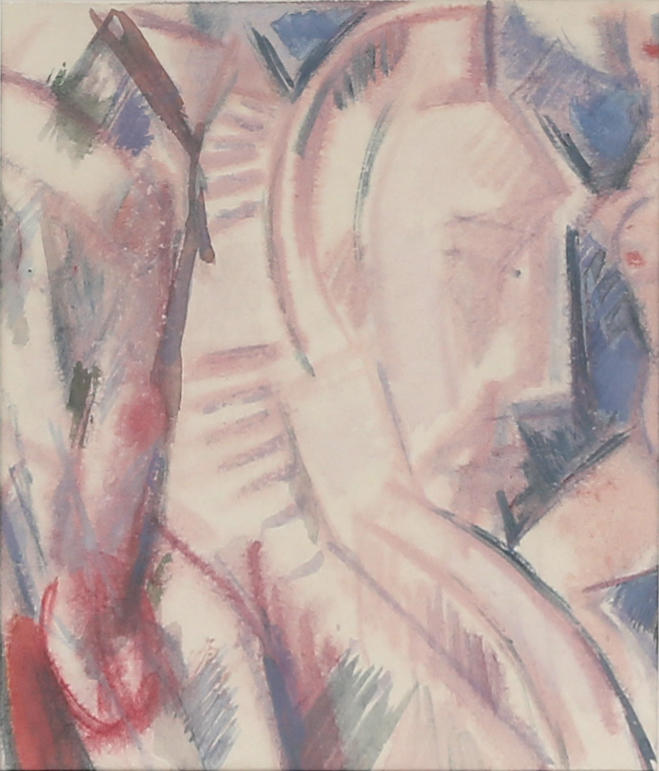


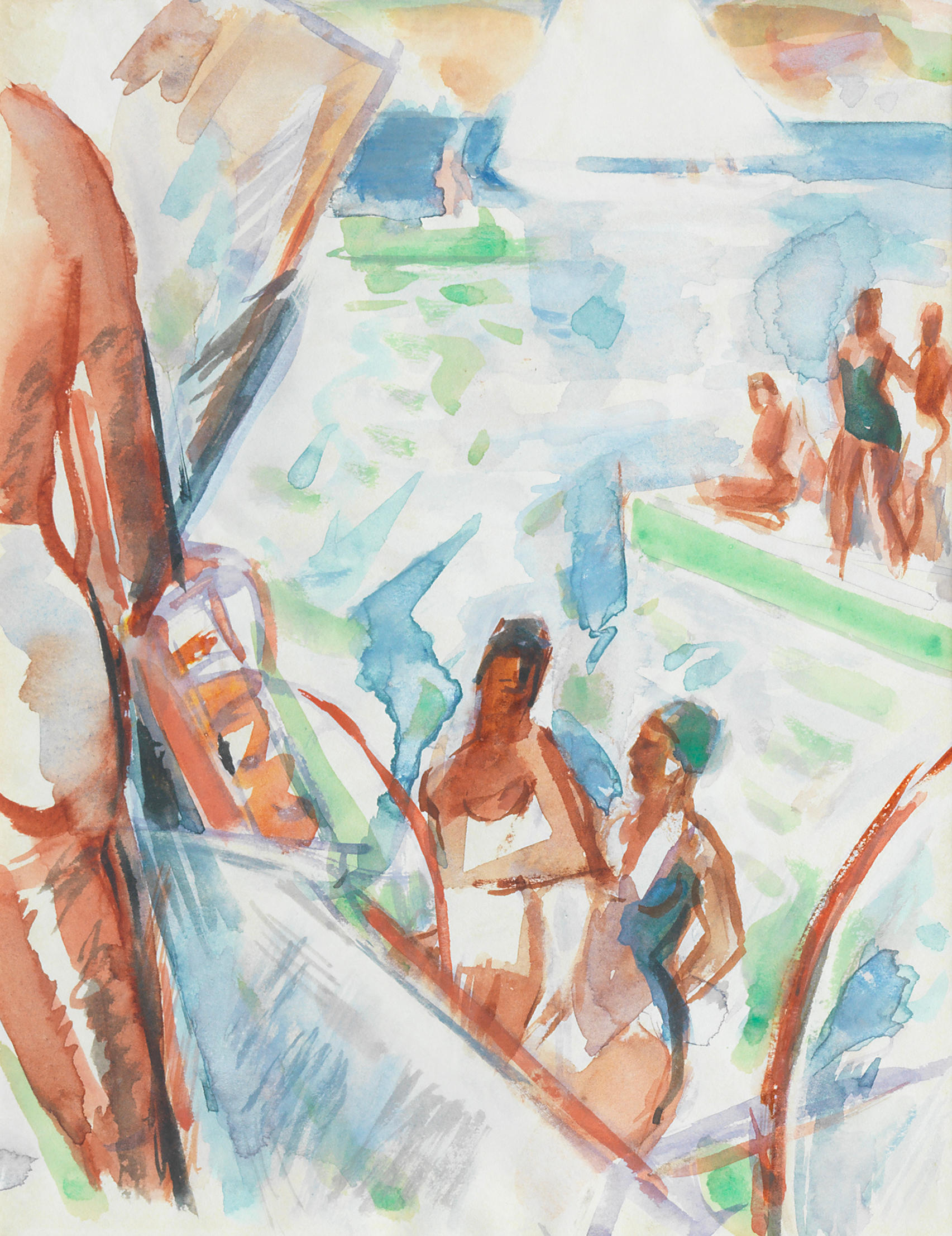

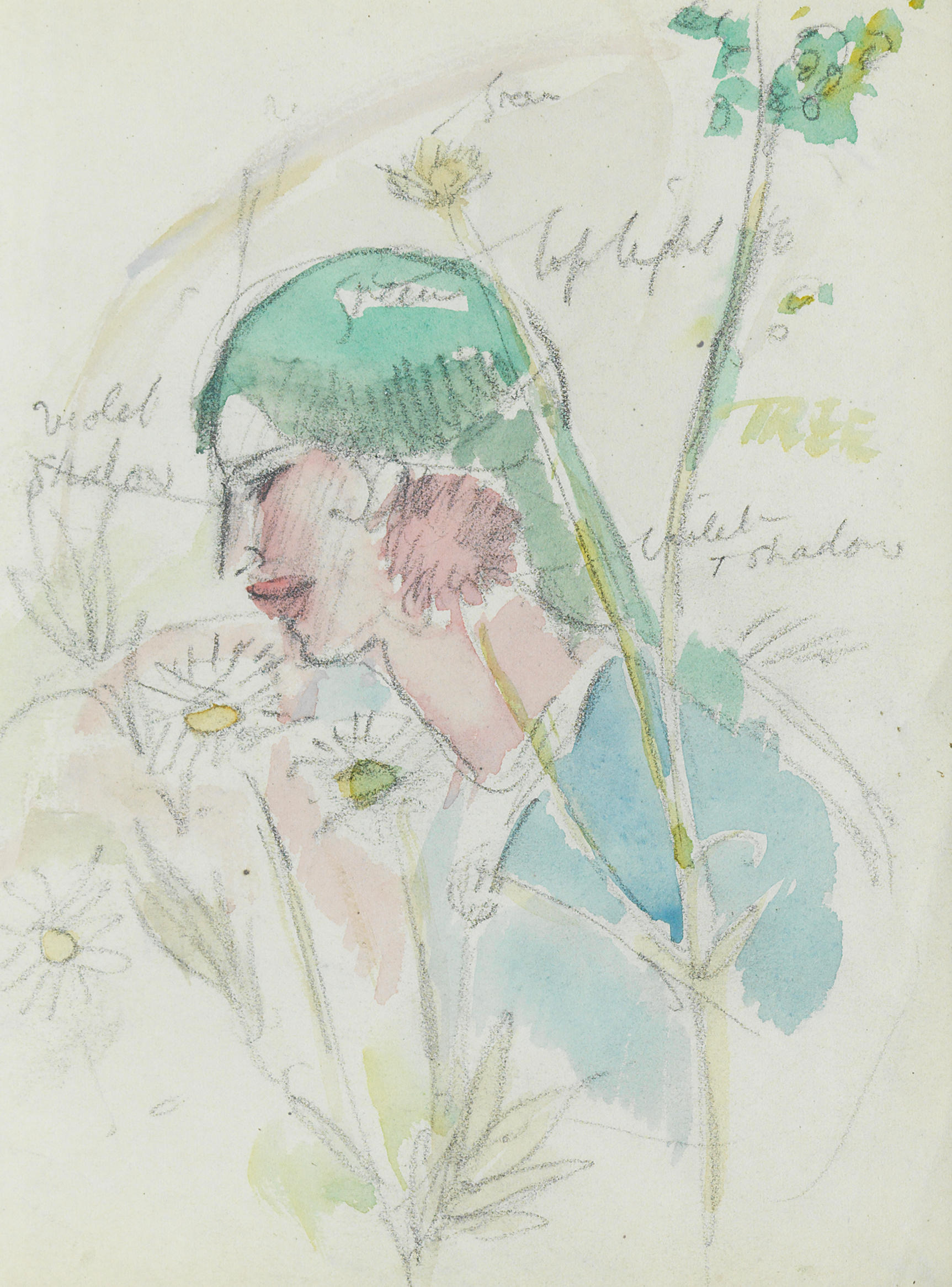

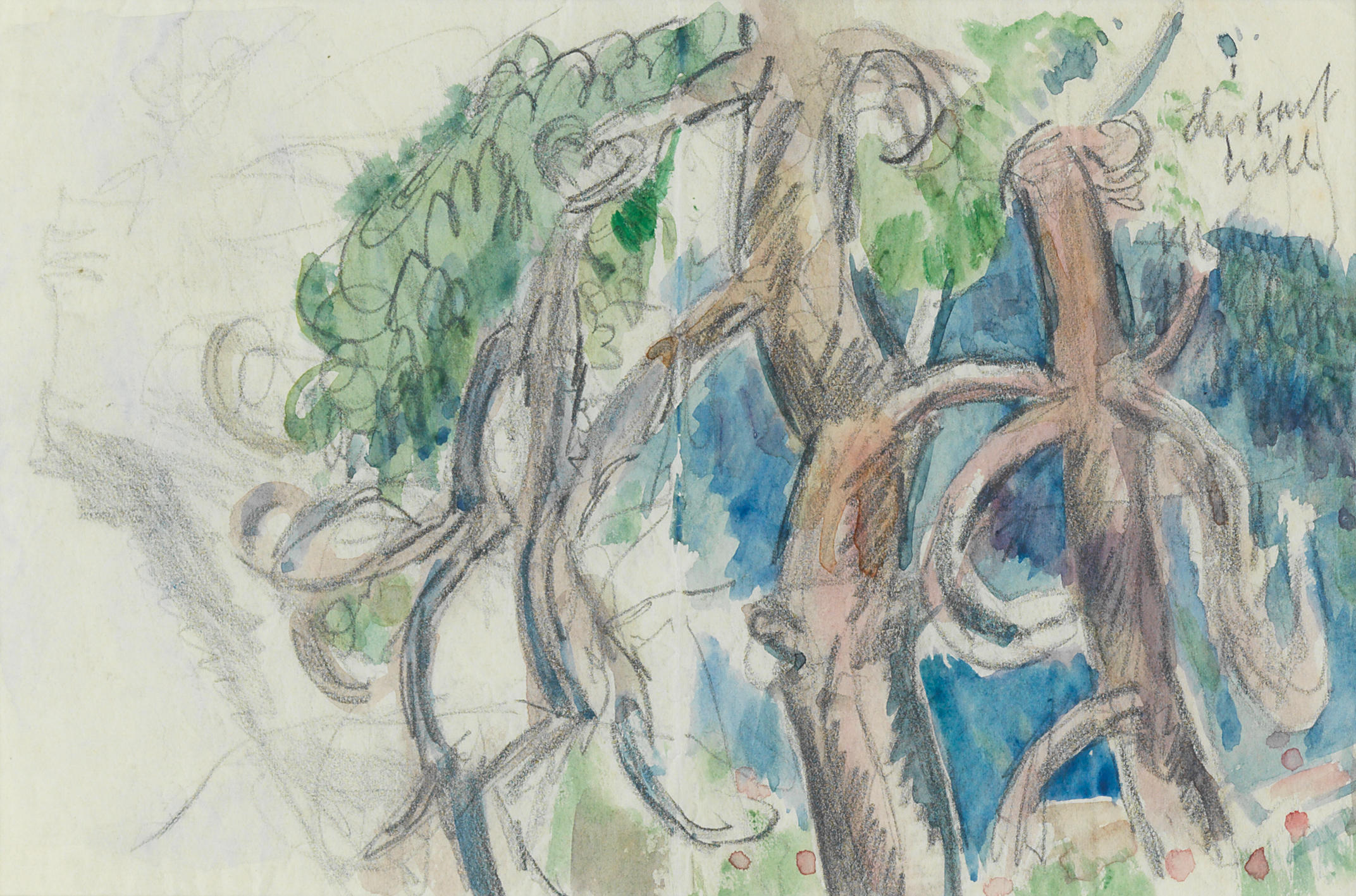



Try LotSearch and its premium features for 7 days - without any costs!
Be notified automatically about new items in upcoming auctions.
Create an alert